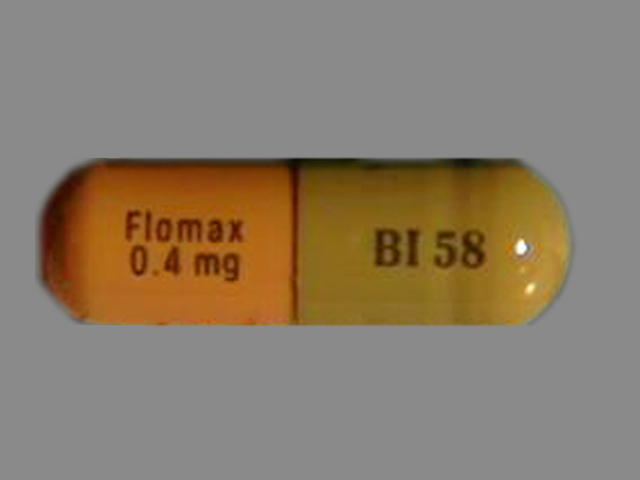Why Take Flomax At Bedtime (3 Top Benefits)

What is Flomax?
Flomax (tamsulosin) is a medication used to treat symptoms of an enlarged prostate gland, a condition known as benign prostatic hyperplasia (BPH). It belongs to a class of medications called alpha-adrenergic blockers, which work by relaxing the muscles in the prostate and bladder neck to improve urinary flow and reduce urinary frequency and urgency.
Flomax was first approved by the US Food and Drug Administration (FDA) in 1997, and it quickly became a popular treatment option for men with BPH. It was developed by the Japanese pharmaceutical company Yamanouchi Pharmaceutical Co. (now part of Astellas Pharma) and is marketed in the United States by Boehringer Ingelheim.
Over the years, Flomax has undergone numerous clinical trials to evaluate its safety and efficacy, and it has been found to be generally well-tolerated by most patients. However, like all medications, it can cause side effects, such as dizziness, headache, and sexual dysfunction.
Since its introduction, Flomax has become one of the most commonly prescribed medications for BPH in the United States, with millions of prescriptions filled each year. In addition to its use in treating BPH, Flomax has also been used off-label to treat kidney stones, although this use is less common.
How should Flomax be used?
Tamsulosin comes as a capsule to take by mouth. It is usually taken once a day. Take tamsulosin 30 minutes after the same meal each day. Follow the directions on your prescription label carefully, and ask your doctor or pharmacist to explain any part you do not understand. Take tamsulosin exactly as directed. Do not take more or less of it or take it more often than prescribed by your doctor.
Swallow Flomax capsules whole; do not split, chew, crush, or open them. Your doctor will probably start you on a low dose of Flomax and may increase your dose after 2 to 4 weeks.
Flomax may help control your condition, but it will not cure it. Continue to take tamsulosin even if you feel well. Do not stop taking Flomax without talking to your doctor.
Why is Flomax taken at night?
One of the potential benefits of taking Flomax at bedtime is to reduce the risk of dizziness or lightheadedness that may occur when standing up too quickly after taking the medication.
When Flomax is taken, it can cause a drop in blood pressure, especially in older adults or those with pre-existing blood pressure issues. By taking the medication at bedtime, the risk of experiencing a sudden drop in blood pressure upon standing up may be reduced because the person will already be in a lying-down position.
Additionally, taking Flomax at bedtime may help improve the overall effectiveness of the medication. The medication works by relaxing the muscles in the prostate gland and the bladder neck, which makes it easier to urinate. When taken at bedtime, the medication has more time to be absorbed and circulate in the body, which can enhance its effectiveness.
However, it’s important to follow your healthcare provider’s instructions on when and how to take Flomax, as individual circumstances may vary. Some people may experience more benefits from taking the medication in the morning or at another time of day, depending on their symptoms and lifestyle.
This is so the highest levels of the medicine are in your body during the day and give you the most benefit when you are most likely trying to pee. It’s best to take it at about the same time each day.

What are the side effects of Flomax?
Flomax comes with the potential for side effects. The most common side effects include dizziness, runny nose, and abnormal ejaculation, including:
- failure to ejaculate
- decreased ease of ejaculation
- ejaculation of semen into the bladder instead of out of the body
Serious side effects are rare. If you take Flomax and think you’re experiencing one of the following serious side effects, see a doctor right away or call 911.
Orthostatic hypotension: this is low blood pressure that happens when you stand up. It can cause lightheadedness, dizziness, and fainting. This effect is more common when you first start taking Flomax. It’s also more common if your doctor changes your dosage. You should avoid driving, operating machinery, or doing similar activities until you know how your dosage of Flomax affects you.
Priapism: this is a painful erection that won’t go away and that’s not relieved by having sex. Priapism is a rare but severe side effect of Flomax. If you experience priapism, contact your doctor immediately. Untreated priapism can lead to permanent problems with having and maintaining an erection.
Allergic reaction: an allergic reaction to Flomax can include rash, itching, hives, trouble breathing, and swelling of your throat or tongue.
Serious skin reactions: Flomax can cause serious skin reactions, including Stevens-Johnson syndrome. Symptoms of skin reactions can include raised welts, facial swelling, fever, and difficulty breathing.
Intraoperative floppy iris syndrome: this is a complication during surgery for cataracts or glaucoma. Although rare, this complication has been reported by people who have used Flomax and also had these surgeries. Tell your doctor or surgeon that you take Flomax if you need to have cataract or glaucoma surgery.





